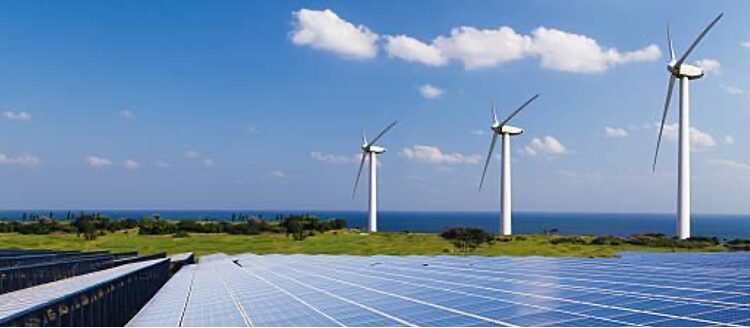THE EU RELAUNCHES ON ENVIRONMENTAL SUSTAINABILITY. BY 2030, 42.5 PER CENT OF ELECTRICITY MUST BE PRODUCED FROM RENEWABLE SOURCES.
On 30 March, the EU reached an agreement on a new directive to promote and regulate energy from renewable sources. This was announced in a tweet by EU President Ursula von der Leyen.
The political agreement reached by the European Parliament, the Commission and the EU Member States includes a legally binding target to increase the share of renewable energy in the Union’s overall energy consumption to 42.5 per cent by 2030 (with RePower EU the EU executive had proposed 45 per cent).
This means, in practical terms, doubling the clean share in the EU’s energy mix, which currently stands at 22.1 per cent, according to internal statistics. The agreement closes negotiations on the main elements of the EU’s ‘Fit for 55’ climate package, presented in July 2021, which aims to achieve a net reduction of 55% in greenhouse gas emissions by 2030.
The agreement, therefore, envisages increasing the share of energy obtained from renewable sources in sectors such as transport, domestic heating and industry. To achieve this, the directive will seek to speed up authorisation processes for wind and solar projects by introducing dedicated ‘fast-track areas’ for renewables and avoid bureaucratic bottlenecks and obstacles, as the text’s rapporteur for the Parliament, MEP Markus Pieper explains.
As far as the transport sector is concerned, member states will be able to choose between a target of at least a 29% share of renewables in final energy consumption by 2030, or a 14.5% reduction in greenhouse gas intensity through the use of renewables, which will also have to contribute at least 5.5% of advanced biofuels (i.e. from non-food feedstocks) and renewable fuels of non-biological origin (renewable hydrogen and synthetic hydrogen fuels) to the sector’s consumption. In this regard, the contribution of low-emission hydrogen (of nuclear origin) will be counted as renewable.
Industry, on the other hand, is required to increase its use of renewables by 1.6 per cent each year, and its hydrogen consumption must come from 42 per cent renewable synthetic fuels. However, this is an ‘indicative’ target, which means it is not a legally binding obligation.
For heating and cooling of buildings, a 49% share of energy from renewable sources is required by 2030, with national increases of 0.8% per year until 2026 and 1.1% in the following four years.
On the raw material front for renewable energy development, biomass energy production (RED) remains counted as 100% renewable. Environmental organisations protest about this because using e.g., wood to produce energy could have a negative impact on forests, which capture carbon dioxide and help preserve the planet’s biodiversity. The European Parliament had initially tried to end subsidies for biomass and exclude primary wood combustion from EU targets, but the move was opposed by countries such as Finland and Sweden, which rely on this type of resource for a significant share of their energy.
Hydrogen produced from nuclear energy also continues to be part of the EU’s agreement on renewables. Paris obtained atomic energy to be counted towards the decarbonisation of the industry, albeit with a compromise that 42% of the hydrogen produced should come from renewable fuels of non-biological origin by 2030 and 60% by 2035.
Before becoming law, the political agreement still needs to be formally ratified by the EU’s two legislators: the European Parliament and the EU Council, representing the bloc’s 27 member states. This is usually a formality.
The agreement, therefore, as presented on 30 March, stands as a not inconsiderable driving force towards a greener and more regulated European future, but there is no doubt that it can only be seen as a first step towards the total decarbonisation of the old continent, which will have to take place no later than 2050, as enshrined in both the Paris Agreement and the Green Deal.
It remains to be seen concretely what percentage of the Member States will be able to meet the 2030 targets. We hope that the agreement will be fulfilled to 100 per cent of its potential. There is no more time for prevarication, the climate crisis does not wait.
Article by Samuele Giovanardi Fiorucci, Italian Climate Network volunteer

